Kiki’s Delivery Service (1989)
In Kiki’s Delivery Service (1989), a young witch named Kiki moves to a new town to begin her year of independent training, starting a delivery service on her broomstick. Accompanied by her loyal cat, Jiji, Kiki navigates the challenges of growing up, finding her confidence, and discovering her place in the world.
Kiki’s Delivery Service
Original title: Majo no takkyûbin
Director: Hayao Miyazaki
Country: Japan
$25 Amazon Gift Card Giveaway
Before we dive into Kiki’s Delivery Service, take a moment to enter this $25 Amazon Gift Card giveaway to celebrate the pre-order release of Meow! Cats in Horror, Sci-Fi, and Fantasy Movies For a chance to win, fill out the Rafflecopter below. The giveaway is open worldwide and ends February 25, 2025. Good luck!
a Rafflecopter giveaway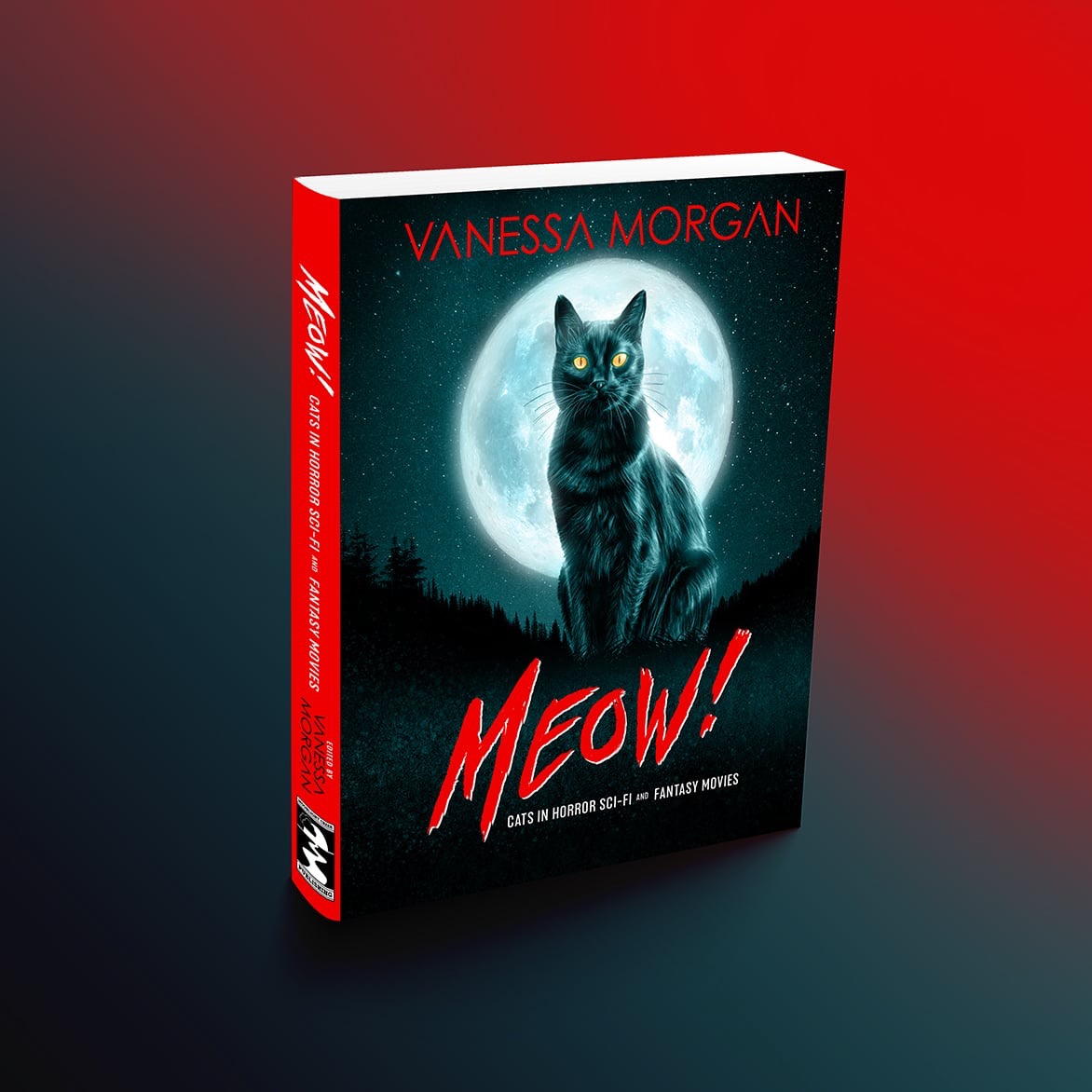
Kiki’s Delivery Service cat movie of the day
In the Western Hemisphere, the Catholic Church initially regarded witchcraft as nothing more than pagan superstition. However, it ignited a wave of hysteria that resulted in some of the darkest periods in Western history: the infamous witch trials, spanning from roughly 1400 to 1782. The last official witch execution took place in Switzerland in 1782, marking the end of this tragic era. Despite its ancient origins, the fear of witchcraft caused immense suffering for more than 50,000 witches and left a lasting scar on Western history.
Interestingly, widely recognized imagery of witches did not exist until the 16th century. German artists like Albrecht Dürer began experimenting with engravings, such as “The Four Witches” in 1497. However, with just two prints created around 1565, it is Pieter Bruegel the Elder who is responsible for shaping the stereotypical image of a witch: a hunchbacked hag with a hooked nose, often depicted with a ghastly wart, hairy moles, limp frizzy gray hair under a black pointed hat, flying on a broomstick, while her black cat watches over a boiling kettle of a sinister brew made from toad mucus, dried goat testicles, and freshly gouged-out eyes.
These days, it is impossible to discuss witchcraft without mentioning Benjamin Christensen’s brilliant 1922 masterpiece, Häxan. This film, partly based on the director’s obsessive study of the notorious 15th-century German guide for inquisitors, Malleus Maleficarum (1486), was the most expensive Swedish/Danish production of its time—a documentary/mockumentary/horror film avant la lettre. The film suggests that the mass hysteria following the 1215 papal bull by Pope Innocentius III, which officially sanctioned witch-hunting as a heretic-unmasking process, may have been rooted in misunderstandings of mental and neurological disorders. Ironically, Christensen himself became the target of a witch-hunt in several countries. For instance, more than 8,000 Catholic women protested the premiere in Paris in 1926.
The Japanese perceive witches differently. They can live among the regular population, blending into everyday life. Given Japan’s rich mythology—which includes gods, demons, dragons, ghosts, and other spirits—less than half a percent of the population identifies as Catholic, and the concept of an almighty devil is mainly absent. When authors Eiko Kadono and Akiko Hayashi published the children’s fantasy novel Kiki’s Delivery Service in 1985, they included familiar European elements like a black cat companion and flying on a broomstick. However, their portrayal of witches was unique, depicting them as helpful little pixies.
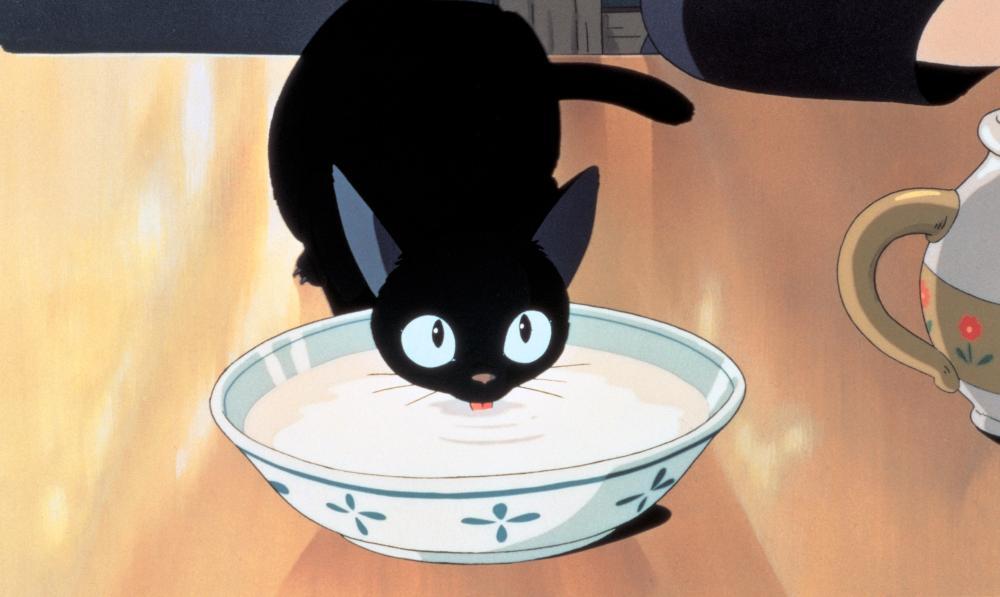
Kiki’s Delivery Service is a coming-of-age tale about a 13-year-old witch who, following ancient tradition, must spend a year training away from her parents in a city of her choice. Armed only with her mother’s broomstick, a black dress, and her talking black cat, Jiji, the young and inexperienced Kiki sets off for the city of Koriko to begin her journey.
Although Jiji points out Koriko’s drawbacks and suggests they move elsewhere, Kiki is thrilled when they arrive in her dream city by the ocean. Coming from a small village, however, she is quickly overwhelmed by the hustle and bustle of big-city life. Unfamiliar with traffic rules, she gets into trouble with a police officer but is unexpectedly saved by a boy named Tombo. Later, as she frantically searches for a place to eat or sleep, Kiki naively discovers that checking into a hotel is not as simple as she had imagined.
When Kiki flies around Koriko, a small emergency arises at the Gütiokipänjä bakery. Without hesitation, she steps in to help the pregnant Osono deliver a forgotten pacifier just in time to soothe a crying baby. Grateful for Kiki’s help, Osono offers her and Jiji an abandoned attic room with a beautiful ocean view, provided Kiki assists her husband, Fukuo, in the bakery. Thrilled by the offer, Kiki and Jiji feel like children in a candy store… until they discover that the room is covered in flour and desperately needs a makeover. Jiji, joking that he will turn into a white cat by morning, tries once more to convince Kiki to move elsewhere, especially after catching sight of the posh white cat next door.
As she explores her surroundings, Kiki discovers that her most remarkable talent is flying on her broomstick. Encouraged by Osono, she starts her own business: “Kiki’s Delivery Service.” The venture quickly garners positive feedback from customers, and Kiki feels excited and confident as she finds her place in the community.
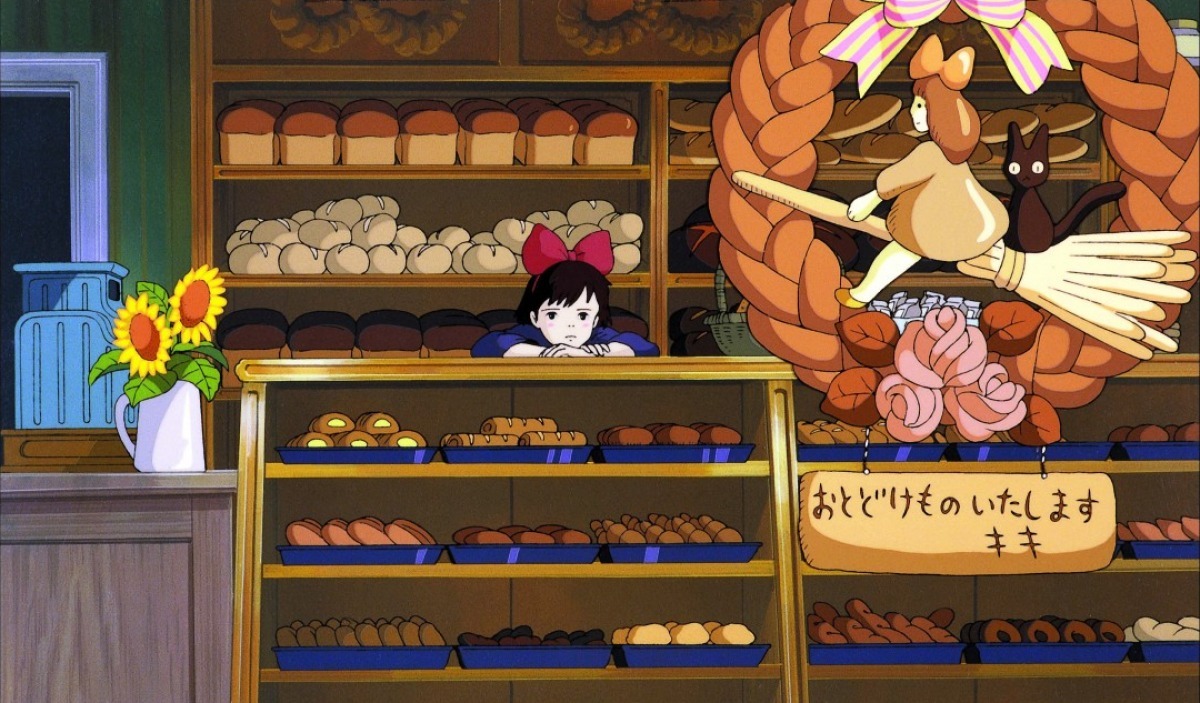
Kiki’s first delivery is one that she and Jiji will never forget. As Kiki sets off to deliver a birthday present—a stuffed animal that looks just like Jiji—a sudden gust of wind throws her off course, leaving her stranded in a forest near a nest of eggs. The crows see her as an intruder and attack her to defend their territory. Although Kiki manages to escape, she loses the birthday present in the process. Desperate to complete her first delivery, Kiki comes up with the idea of using Jiji as a stand-in for the stuffed animal until she can retrieve it. Naturally, Jiji is dismayed by this plan because it means he has to pretend to be lifeless. Luckily, with the help of Ursula, a young painter living in the forest, and a friendly dog named Jeff, Jiji makes it home safely.
However, things take a troubling turn that plunges Kiki into mental distress. Tombo invites her to join his flying club. Initially put off by his brusque invitation, Kiki eventually considers it. She carefully plans her day to ensure she returns home in time to prepare for their outing. Unfortunately, her well-laid plans spiral into chaos, leaving her bedridden with a fever. Osono takes care of her, but Kiki feels her magical powers slipping away. She can no longer fly and loses the ability to communicate with Jiji. To add insult to injury, Jiji seems more interested in his new girlfriend, Lily—the aloof white cat next door.
The loss of her magical powers causes Kiki to question whether she is truly worthy of being a witch. Feeling lost and uncertain, she receives a timely visit from her friend Ursula. Drawing from her own experiences, Ursula understands that Kiki needs a distraction from her current state and a new goal to focus on.
In a twist of fate, Tombo’s clumsiness puts him in a life-threatening situation where he dangles from a loose cord of the out-of-control Dirigible Freedom Adventurer. This incident ignites Kiki’s courage, prompting her to rush in and rescue him. She regains her magical powers, and her newfound confidence helps her see Jiji as an independent cat rather than just her sidekick.
The film concludes on a feel-good note, with Kiki continuing her delivery service with renewed enthusiasm. More importantly, she has learned valuable lessons about the challenges of adolescence, evolving from a naïve young witch into a confident individual. By emphasizing character development in this coming-of-age story, Kiki’s Delivery Service sets itself apart from many other animation films, and it demonstrates that this medium can effectively address complex emotional and psychological themes.
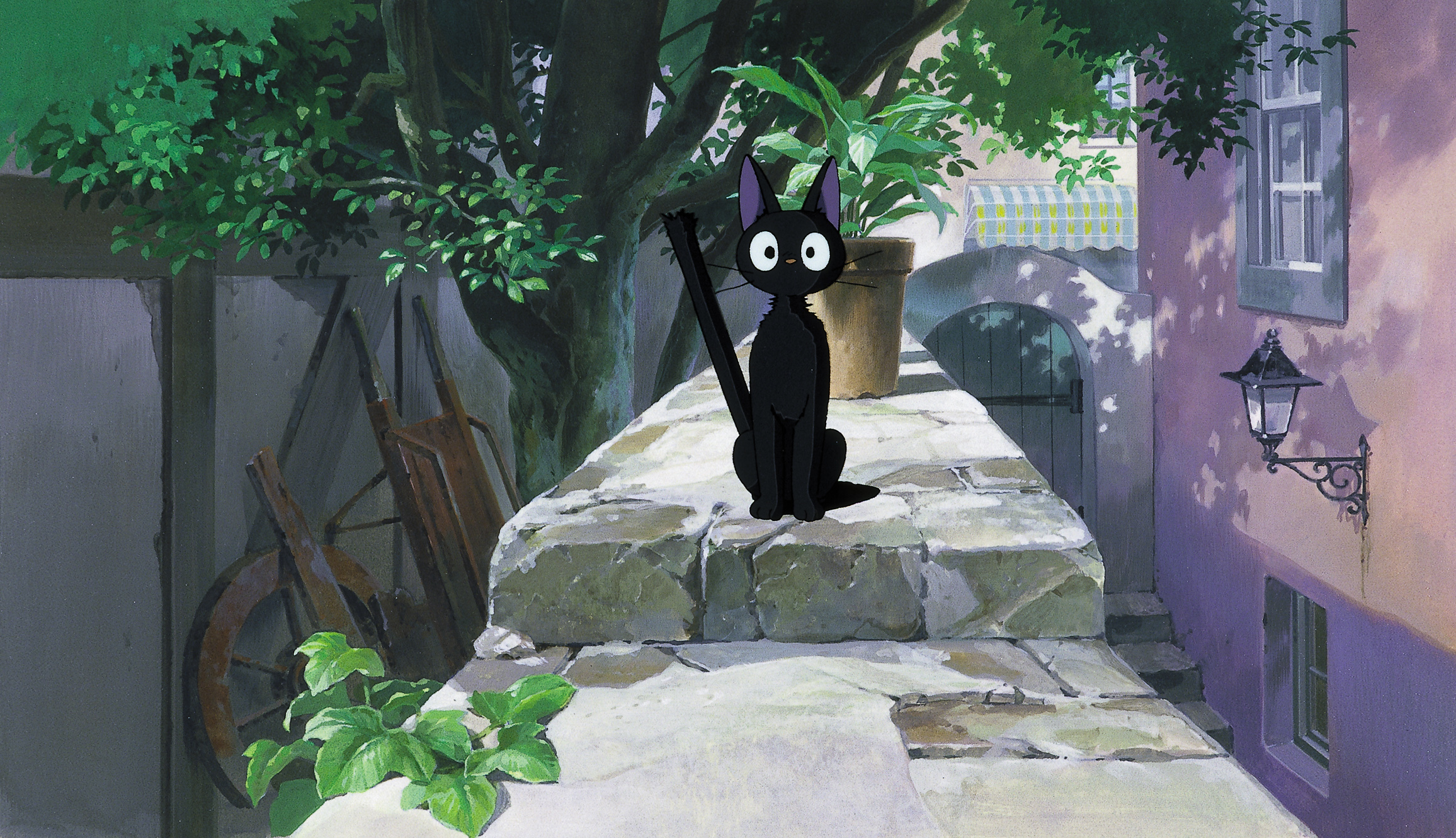
Girls with magical powers are a common theme in Japanese filmmaking, but Miyazaki takes a different approach. He sees witchcraft as a metaphor for young girls’ aspirations and dreams. Beneath the surface of the witch narrative, the film explores deeper themes such as resilience, self-confidence, vulnerability, maturity, persistence, and the importance of community support.
In a country that adores cats like Japan, it is no surprise that Jiji has become one of animation’s most iconic feline characters. Known for his sharp wit and sarcasm, Jiji eventually matures, partly thanks to his interactions with the cat next door. More than just a cute pet or sidekick, Jiji is central to the story, representing an essential part of Kiki’s world and growth.
It is also easy to understand why Studio Ghibli’s lush visual style and stunning hand-drawn animation have become iconic. The novel takes place in a fictional Northern European country, and to create the meticulously detailed environments, Miyazaki and his team traveled to Stockholm and Visby on the Swedish island of Gotland for research.
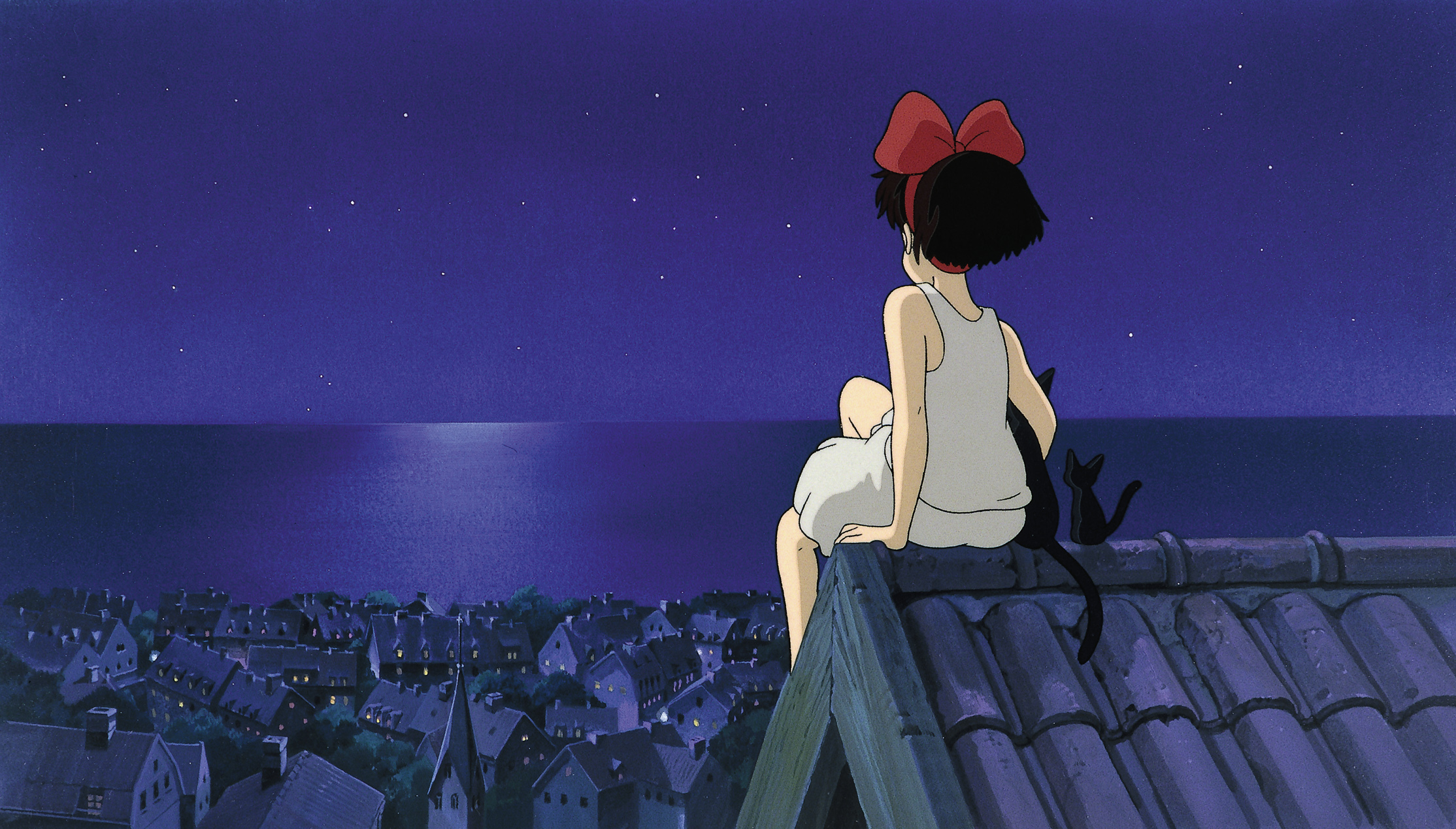
At its core, Kiki’s Delivery Service is about finding a balance between magical powers and personal growth. Miyazaki captures this journey with such aesthetic beauty that even legendary director Akira Kurosawa expressed his admiration for the film. It is celebrated for its artistic approach, emotional depth, and memorable characters, making it a game-changer in anime and a milestone in portraying animated cats.
The film’s global cultural impact also helped introduce audiences outside Japan to Miyazaki’s Studio Ghibli, which went on to produce four of the ten highest-grossing Japanese animated films to date. With a budget of $6.9 million, Kiki’s Delivery Service was one of the most expensive anime films of its time, but it grossed an impressive $41.8 million worldwide as of 2023.
Kiki’s Delivery Service cat
Is Jiji, the Kiki’s Delivery Service cat also one of your favorites? Let us know in the comments! If not, who is your favorite movie cat?
Find Kiki’s Delivery Service (1989) on Amazon!
About the author
SVEN DAEMS explores unorthodox art forms, compiles playlists for one of Europe’s oldest active jazz clubs (Hnita-Hoeve), and spins obscure DJ sets. When he is not learning to pronounce hexakosioihexekontahexaphobia, he is probably reading about art, music, film, bizarre food, alternative politics, philosophy, witchcraft, Philippine lore, and Japanese mythology. For over a decade, he ran his websites—Svn’s Corner and Svn’s Corky Corner—and recently launched a new digital platform, Svn’s Unsane Vortex. As a guest writer, Sven wrote articles about music, film, and art for different blogs, newspapers, and magazines. He also contributed essays to the books When Animals Attack: The 70 Best Horror Movies with Killer Animals, Strange Blood: 71 Essays on Offbeat and Underrated Vampire Movies, and Evil Seeds: The Ultimate Movie Guide to Villainous Children.
This review on Kiki’s Delivery Service (1989) was previously published in the book Meow! Cats in Horror, Sci-Fi, and Fantasy Movies.
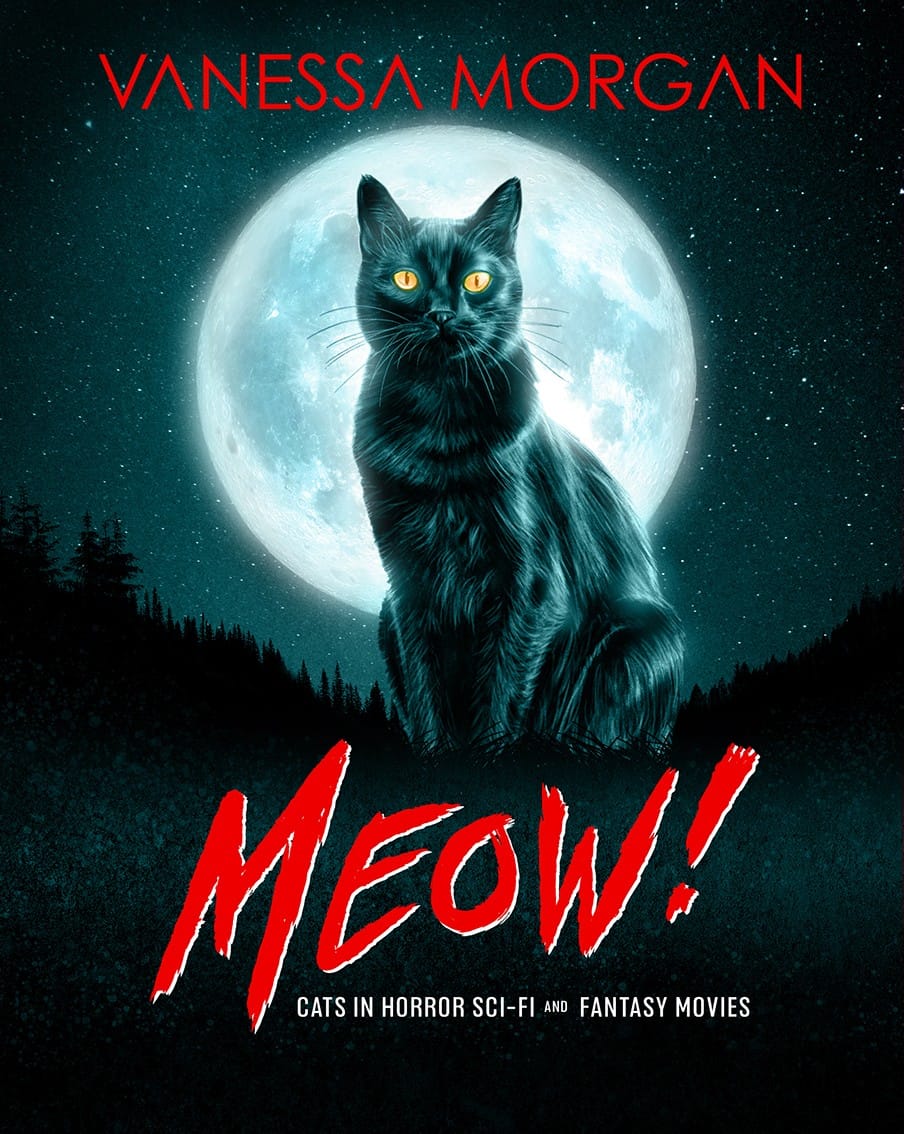
Pin the Kiki’s Delivery Service movie poster!
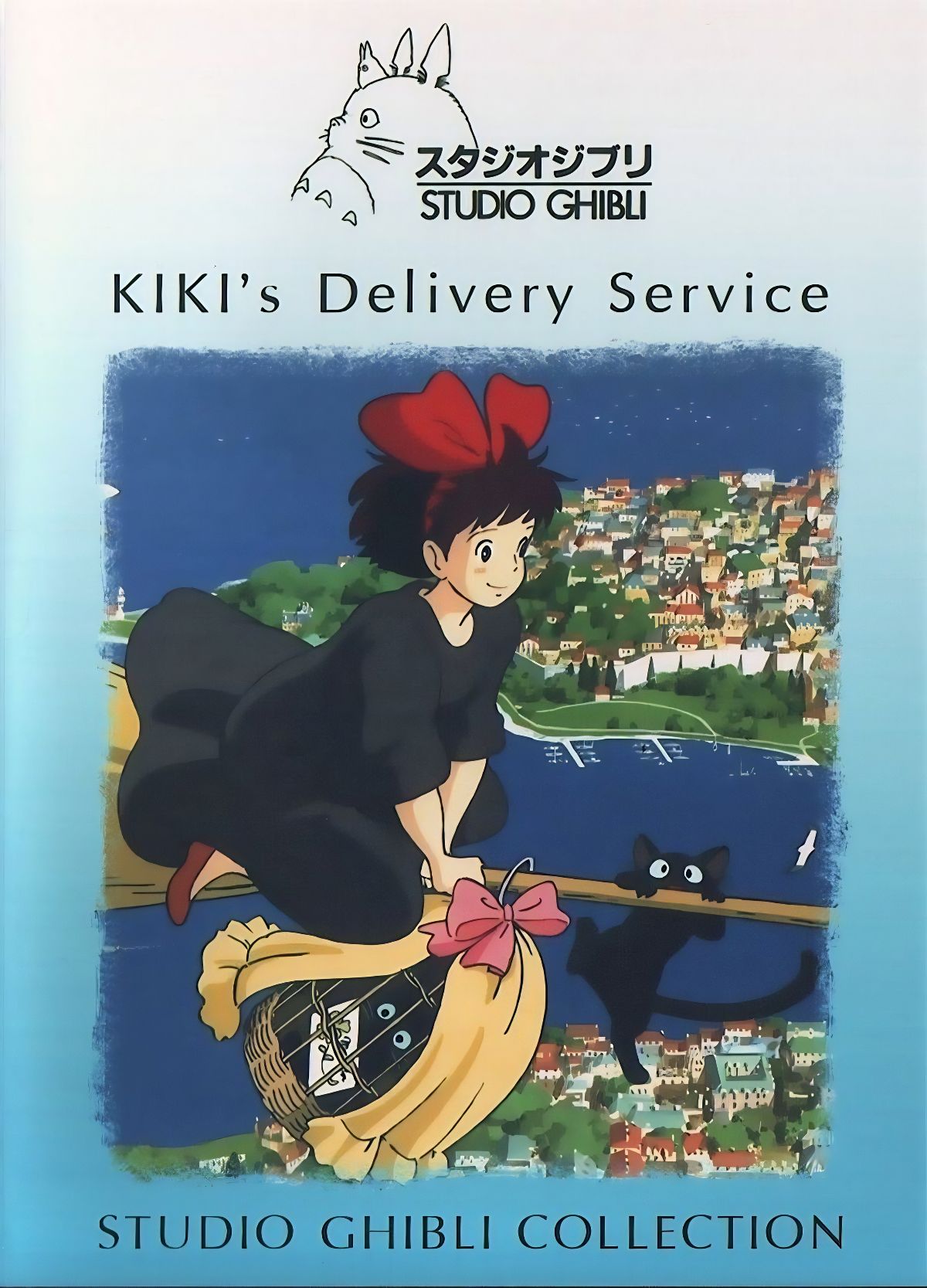
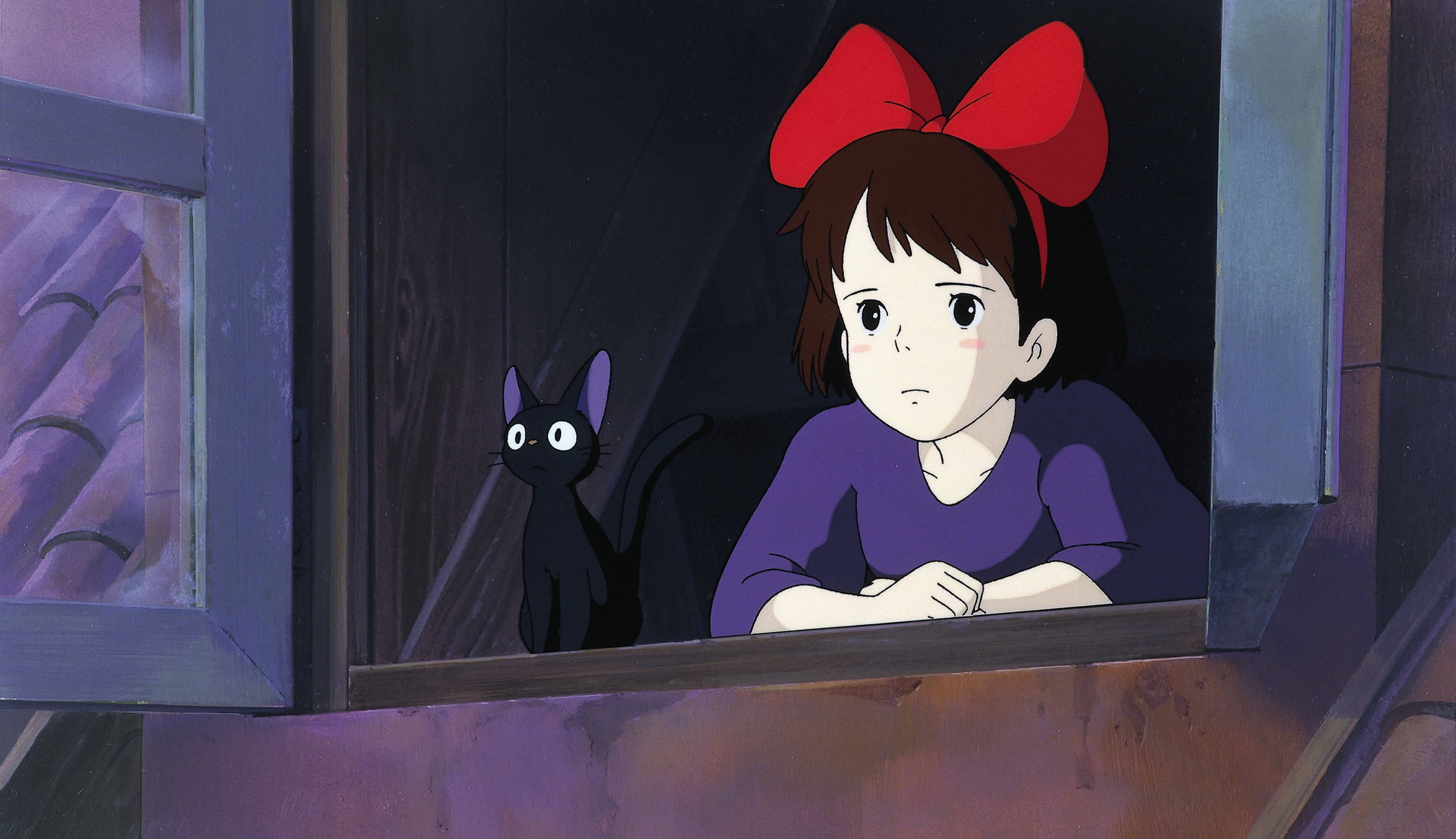
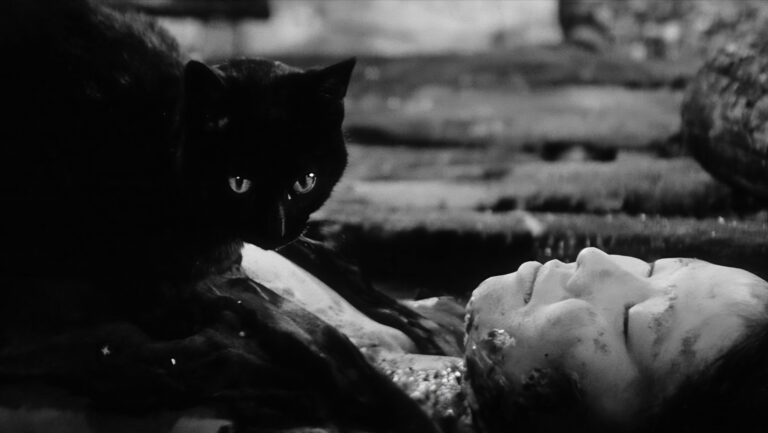

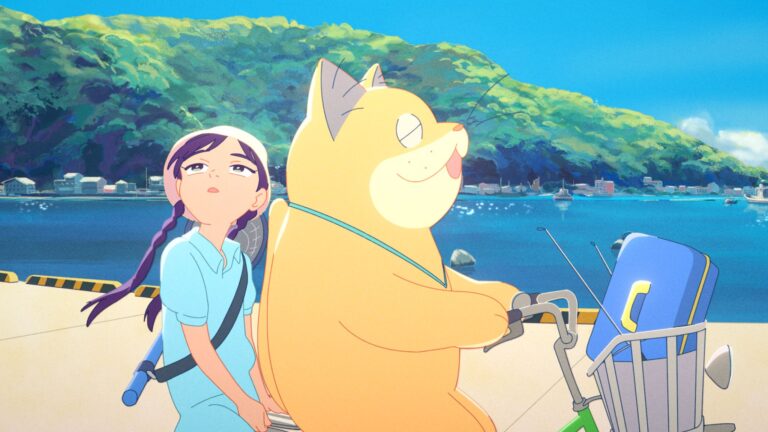
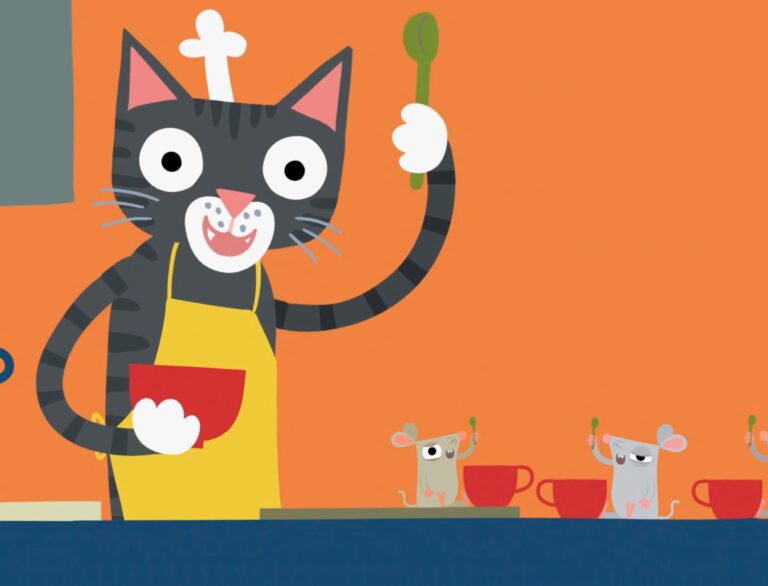
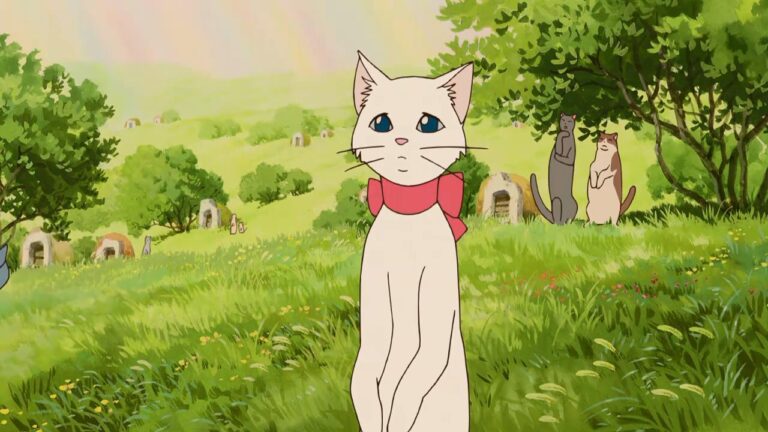
Sounds like a great read.
Thank you for joining the Awww Mondays Blog Hop.
Have a fabulous Awww Monday and week. ♥
That looks darn incredible, bravo you!